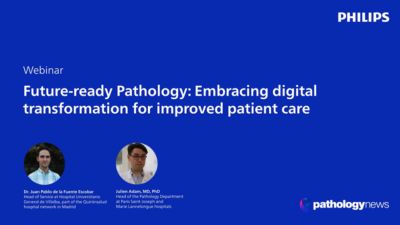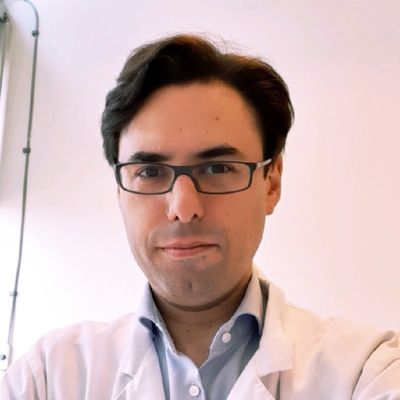Future-ready Pathology: Embracing digital transformation for improved patient care
- Featuring |
- July 31 2025
- Duration 5:11
Two leading European hospital networks—Hospital Universitario Quirónsalud Madrid, represented by Dr. Juan Pablo de la Fuente Escobar and the Groupe Hospitalier Paris Saint-Joseph and Hôpital Marie-Lannelongue, represented by Dr. Julien Adam—have transformed their pathology services through digital innovation, sharing their experiences and outcomes in close collaboration with Philips.

At-a-glance:
- Digital pathology enabled subspecialty-based collaboration across hospitals, improving diagnostic quality and operational flexibility.
- AI tools are being deployed to assist with lesion detection and quantification, enhancing both efficiency and diagnostic accuracy.
- Philips provided end-to-end support—from infrastructure planning to cloud integration—ensuring a smooth and scalable transformation.
- Cloud-based storage and intelligent retention policies streamlined data management and laid the foundation for integrated diagnostics.
At Hospital Universitario Quirónsalud Madrid, Dr. Juan Pablo de la Fuente Escobar, Head of the Pathology Department, digitized four public hospitals, enabling 38 pathologists to work fully digitally. Since 2017, over 5.6 million whole slide images have been stored in the cloud, supporting subspecialty-based diagnostics and improving quality and flexibility.
Digital pathology is no longer just a tool—it has become the foundation of how work is organized and how collaboration takes place.

He also emphasized the importance of strong vendor relationships, noting,
Philips positioned themselves as a true partner in achieving a real digital transformation—not just a vendor.
At Groupe Hospitalier Paris Saint-Joseph and Hôpital Marie-Lannelongue, Dr. Julien Adam integrated pathology services across two sites using ergonomic image systems and high-quality scanners. Starting with a hybrid model, the team saw time savings and better collaboration and is now using AI for breast and skin pathology. Reflecting on the implementation, he shared,
I remain strongly committed to the purpose behind digitization and have made a point… to explore its potential applications beyond the mere availability of digital images.

Both institutions highlighted the value of scalable, cloud-based infrastructure in enabling AI integration and cross-site collaboration. As Dr. de la Fuente noted,
Cloud architecture has helped reduce technical complexity. By eliminating local storage dependencies, we’ve achieved a fully scalable infrastructure that is also compliant with all legal and regulatory requirements.

On the role of AI, he added,
I see AI as a tool to improve both efficiency and quality, allowing us to dedicate more time to those diagnoses where human expertise adds the greatest value.
Looking ahead, both teams are exploring integrated diagnostics that combine pathology and radiology data. With AI driving efficiency in high-volume cases and cloud systems reducing technical barriers, the future of pathology is increasingly collaborative, data-driven, and patient-centered.

